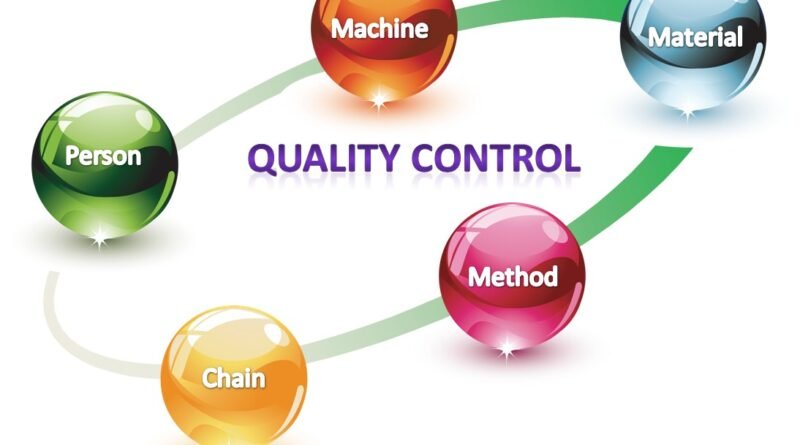Everything You Need to Know About China Quality Inspection
Everything You Need to Know About China Quality Inspection
China has emerged as a manufacturing powerhouse, producing a wide range of products for the global market. As the demand for Chinese products continues to grow, so does the importance of maintaining high-quality standards. China quality inspection plays a crucial role in ensuring that goods manufactured in the country meet international quality and safety regulations. In this comprehensive article, we will delve into the key aspects of China quality inspection, its significance, the inspection process, and its impact on businesses and consumers worldwide.
The Significance of China Quality Inspection
China’s rapid industrialization and economic growth have resulted in a vast manufacturing sector. While this expansion has led to numerous benefits, it has also brought challenges, especially concerning product quality. Quality inspection is of paramount importance for the following reasons:
- A. Global Market Compliance: Many products manufactured in China are exported to international markets. Meeting global quality standards is essential to gain access to these markets and maintain a positive reputation.
- B. Consumer Safety: Faulty or substandard products can pose significant risks to consumers, leading to injuries, health issues, or even fatalities. Quality inspection helps identify and prevent such risks.
- C. Brand Reputation: Consistently delivering high-quality products enhances a brand’s reputation and fosters customer loyalty.
- D. Cost Savings: Detecting defects early in the production process saves manufacturers from costly recalls and rework, reducing overall expenses.
Types of China Quality Inspection
China quality inspection involves various types of inspections carried out at different stages of the manufacturing process. The most common types are:
- A. Pre-production Inspection (PPI): PPI takes place before production begins and involves verifying that raw materials, components, and production plans meet the required specifications.
- B. During Production Inspection (DPI): DPI occurs during the manufacturing process to ensure that production is proceeding according to the approved standards and to identify and address potential issues.
- C. Pre-Shipment Inspection (PSI): PSI is conducted when the production is complete and before the goods are shipped. It ensures that the finished products meet the buyer’s specifications and international standards.
- D. Container Loading Check (CLC): CLC takes place during the loading process to confirm that the correct products are loaded in good condition, minimizing the risk of damage during transportation.
- E. Factory Audit: This is an overall assessment of a manufacturing facility’s quality management system, production capabilities, and compliance with regulations.
Inspection Process and Standards
China quality inspection follows a well-defined process to ensure thorough evaluations:
- A. Scheduling: Buyers or importers arrange inspections with third-party quality inspection companies well in advance.
- B. Inspection Plan: The inspection company creates a detailed plan outlining the scope, criteria, and checklist for the inspection.
- C. On-Site Inspection: Qualified inspectors visit the factory or production facility to assess the products, production process, and quality control measures.
- D. Sampling: Inspectors select a statistically significant sample from the production batch for evaluation.
- E. Inspection Report: The findings are documented in an inspection report, including any defects or deviations from the agreed-upon standards.
- F. Corrective Action: If defects are found, manufacturers must take corrective action to address the issues and improve product quality.
The inspection process adheres to international standards such as ISO 9001 for quality management and other industry-specific standards, depending on the type of product.
Importance of Third-Party Inspection
While some manufacturers have their in-house quality control teams, third-party inspection offers several advantages:
- A. Objectivity: Third-party inspection companies are neutral entities, ensuring unbiased evaluations.
- B. Expertise: These companies specialize in quality control and have extensive experience and knowledge in various industries.
- C. Global Recognition: Third-party inspection reports are recognized and accepted worldwide, instilling confidence in buyers and consumers.
Challenges and Improvements
Despite significant progress in China quality inspection, some challenges persist:
- A. Communication: Language barriers between foreign buyers and local manufacturers can lead to misunderstandings and discrepancies.
- B. Supplier Selection: Choosing reliable and reputable suppliers is crucial to ensure consistent product quality.
- C. Evolving Standards: Keeping up with ever-changing international standards and regulations can be demanding.
To improve the quality inspection process further, embracing technology, improving communication channels, and fostering collaboration between all stakeholders are essential.
Conclusion
China quality inspection is a vital aspect of international trade and consumer safety. It helps maintain product quality, ensure compliance with global standards, and build trust between manufacturers and buyers. By conducting inspections at different stages of production and working with third-party inspection companies, businesses can minimize risks, reduce costs, and deliver high-quality products to the global market. As the manufacturing landscape evolves, continuous improvements in the inspection process will be necessary to meet the demands of an increasingly competitive and quality-conscious world.
